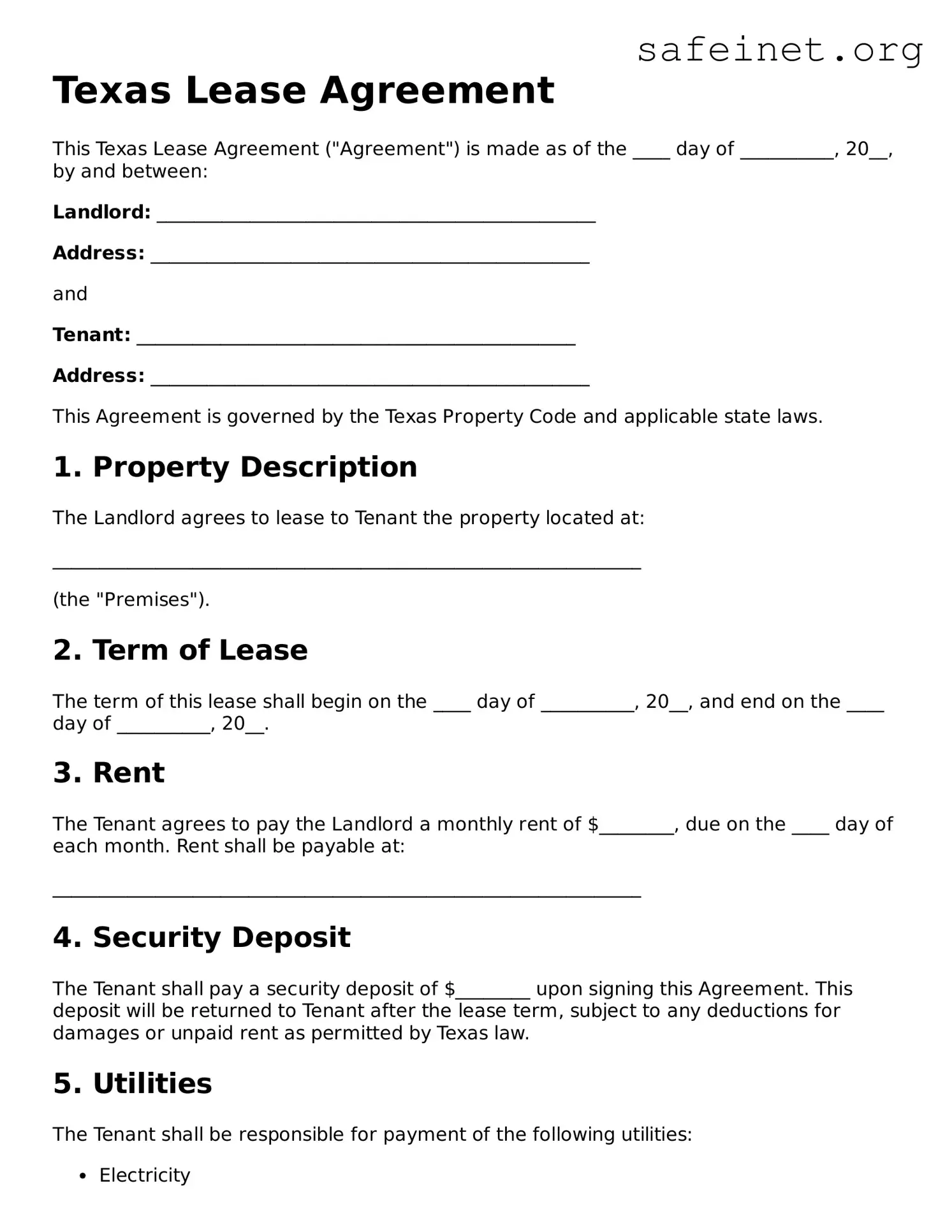Texas Lease Agreement
This Texas Lease Agreement ("Agreement") is made as of the ____ day of __________, 20__, by and between:
Landlord: _______________________________________________
Address: _______________________________________________
and
Tenant: _______________________________________________
Address: _______________________________________________
This Agreement is governed by the Texas Property Code and applicable state laws.
1. Property Description
The Landlord agrees to lease to Tenant the property located at:
_______________________________________________________________
(the "Premises").
2. Term of Lease
The term of this lease shall begin on the ____ day of __________, 20__, and end on the ____ day of __________, 20__.
3. Rent
The Tenant agrees to pay the Landlord a monthly rent of $________, due on the ____ day of each month. Rent shall be payable at:
_______________________________________________________________
4. Security Deposit
The Tenant shall pay a security deposit of $________ upon signing this Agreement. This deposit will be returned to Tenant after the lease term, subject to any deductions for damages or unpaid rent as permitted by Texas law.
5. Utilities
The Tenant shall be responsible for payment of the following utilities:
- Electricity
- Gas
- Water
- Trash Removal
- Internet/Cable
6. Maintenance and Repairs
The Tenant agrees to keep the Premises in good condition and to notify the Landlord of any needed repairs promptly. The Landlord shall be responsible for maintaining the structural integrity of the building.
7. Alterations
The Tenant shall not make alterations to the Premises without prior written consent from the Landlord.
8. Termination
Either party may terminate this Agreement by providing written notice of ____ days to the other party. This notice must be given at least ____ days prior to the intended termination date.
9. Governing Law
This Agreement shall be governed by the laws of the State of Texas.
10. Signatures
By signing below, both parties agree to the terms of this Lease Agreement.
Landlord Signature: ____________________________________
Date: ____________
Tenant Signature: _____________________________________
Date: ____________
